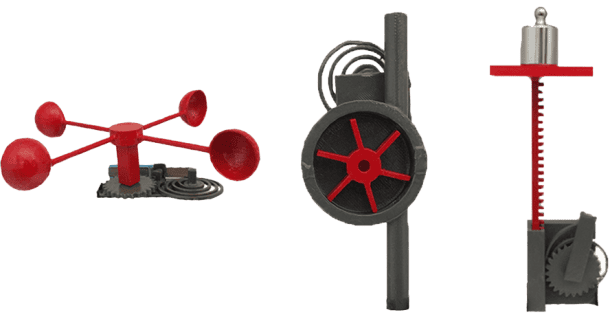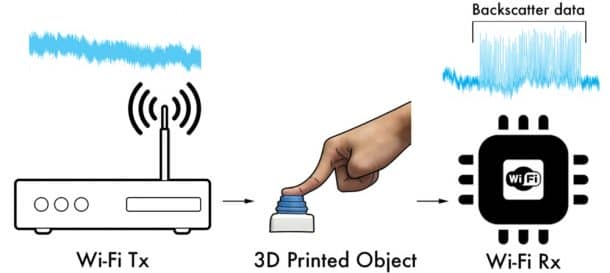A team of researchers from the University of Washington has 3D printed objects that have the ability to connect to the WiFi without needing batteries or any electricity source. The technology is based on reflection of waves technology known as backscattering. In this phenomenon, ambient radio waves are reflected from a WiFi router via an antenna printed using a plastic and copper mixture.

Rather than using electrical energy to transmit waves, the researchers are using mechanical motion. When a liquid flows, it turns a wheel or pushes a button, the gears and spring activate or deactivate depending on the design. This changes the reflective state of the 3D printed antenna. The data is hard-coded onto the objects in the form of teeth on a gear. The presence or absence of a gear tooth determines how long a switch remains in contact with the antenna and the signal patterns that are created as a result of it are translated into readable output by the WiFi receiver.

One example of such a product is an attachment that can sense when laundry detergent is about to run out and place an online order for more. “As you pour detergent out of a Tide bottle, for instance, the speed at which the gears are turning tells you how much soap is flowing out,” said the senior author of the team’s paper Shyam Gollakota. “The interaction between the 3D printed switch and antenna wirelessly transmits that data. Then the receiver can track how much detergent you have left and when it dips below a certain amount, it can automatically send a message to your Amazon app to order more.”

The team from the University of Washington has also made a number of other similar devices including wind and water flow meters, a scale and a test tube holder. They also printed input devices such as buttons, knobs, and sliders. These can be custom made to connect to a particular system, for example, to control the volume of the connected music system.
We might see a number of other devices come out as well in the near future as the team from Washington continues to research and experiment. You can see a video explaining the project below:


